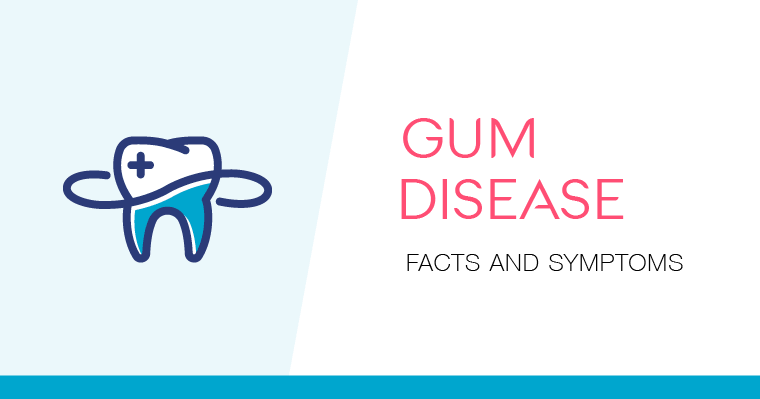Table of Contents
ToggleGum disease is one of the most common diseases that affect adults and children. It can cause severe damage to the tissue and bone that support your teeth. If you have gum disease, it’s important to have regular checkups with your dentist so that you can get treated early on and prevent further oral problems.
What is gum disease?
Gums and bones are affected by gum disease, an oral health condition. Thorough checkups with your dentist detect it early, preventing tooth loss. The American Dental Association (ADA) recommends visiting the dentist every six months for an exam and cleaning. During this, your gums are examined for signs of gum disease.
Plaque accumulation on teeth leads to gum disease when it hardens into tartar. Bacteria trapped in the mouth cause infections in the soft tissue around teeth, known as periodontal pockets.
Untreated pockets worsen over time, damaging the supporting bone structure beneath the gums. Collapsing bone exposes tooth roots, increasing the likelihood of infection or cavity damage. These issues may result in tooth decay or abscesses.
Types of gum disease
Gum disease can be classified into four different types:
Periodontal disease
This is the most common form of gum disease, and it is characterized by pockets between the teeth and gums that become infected. It may also cause the attachment of your teeth to loosen or fall out completely.
Gingivitis
This form of gum disease causes inflammation in your gums without causing any damage to them. It’s not a major concern yet, but if left untreated it can lead to periodontitis and other serious health issues such as heart disease or diabetes.
Periodontitis
This type involves inflammation in both your gums and bones around your teeth that are caused by bacteria in plaque buildup on them over time (not just from brushing). If left untreated, it could lead to tooth loss due to bone loss around each tooth!
Aggressive periodontitis
Typically affects people who already have some kind of chronic health condition like diabetes or cardiovascular disease because these conditions make them more likely to get bacterial infections that spread quickly throughout their body—in this case affecting their gums far quicker than normal too!
Symptoms of gum disease

Gum disease is a serious problem, and if you have it, you may experience some of the following symptoms:
- Red, swollen, and bleeding gums
- Loose teeth (which can also be called losing teeth)
- Bad breath that does not go away when brushing or flossing your teeth well.
Causes of gum disease

Gum disease is caused by a variety of factors, including:
- Bacteria: The bacteria found in plaque on your teeth produce damage to the gums around it. Plaque is sticky and difficult to remove without brushing and flossing daily, which is why gum disease has been called “the silent disease” because you may have no symptoms until it’s too late.
- Smoking: Nicotine in cigarette smoke irritates tissues and causes inflammation, making it more difficult for your body to repair any damage done by bacteria or plaque build-up.
- Diabetes: Diabetes causes blood sugar levels to rise above normal levels, which causes damage to blood vessels throughout the body—including those in your mouth! This makes it harder for oxygen-rich blood cells to reach damaged areas of tissue like gums (which could lead them to abscesses It also increases the risk the reactions from bacterial growths such as periodontal pockets , which are deep pockets between tooth roots where bacteria tend to congregate together with food particles – forming hardened deposits known as calculus .
Risk factors for gum disease
Gum disease can affect anyone, but certain factors put you at higher risk for developing gum disease. Some of these risk factors include:
- Diabetes
- Poor oral hygiene habits, such as not brushing or flossing regularly
- A family history of gum disease or a genetic predisposition to the condition (some people just have more plaque build-up than others)
How to prevent gum disease
Preventing gum disease involves multiple methods.
Regularly brush and floss your teeth for effective prevention. Proper brushing technique impacts gum health.
Use a soft-bristled toothbrush and avoid applying excessive pressure. Brushing for two minutes removes food particles and inhibits bacterial growth.
Floss regularly, especially with braces or dental work. Cease smoking or heavy alcohol consumption to prevent gum damage. Quitting smoking saves lives and restores oral health.
Avoid sugary foods, particularly sugary drinks, to prevent bacterial growth on teeth.
Seek an immediate dental appointment if you have periodontal symptoms.
If you have a serious case of gum disease, it could take several visits to your dentist to get it under control and begin healing. Your dentist may prescribe medications or recommend that you have surgery to remove infected tissue and bone depending on what is causing the problem.
Gum disease is often caused by poor oral hygiene habits such as not brushing or flossing regularly enough and being unable to afford dental care (if this sounds like you). You can help prevent gingivitis by visiting a dental clinic every six months for checkups and treatments or at least twice a year if possible because regular checkups can help identify problems early before they become too severe which means less time spent in recovery after treatment has been completed!









